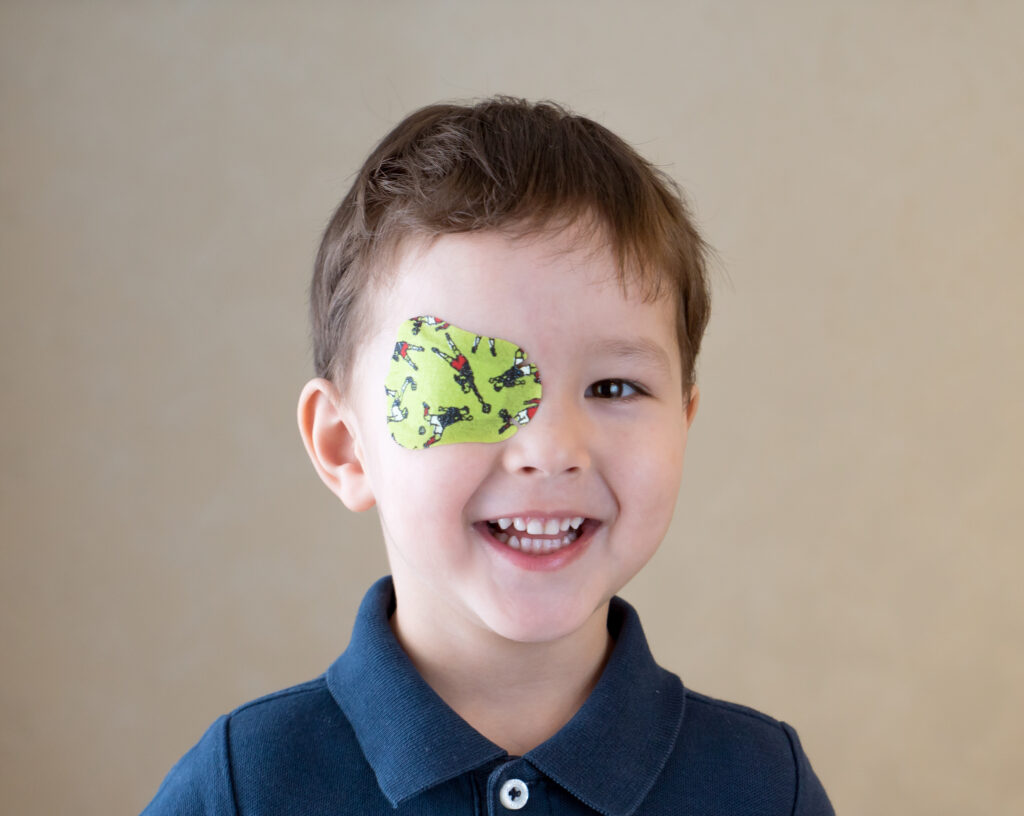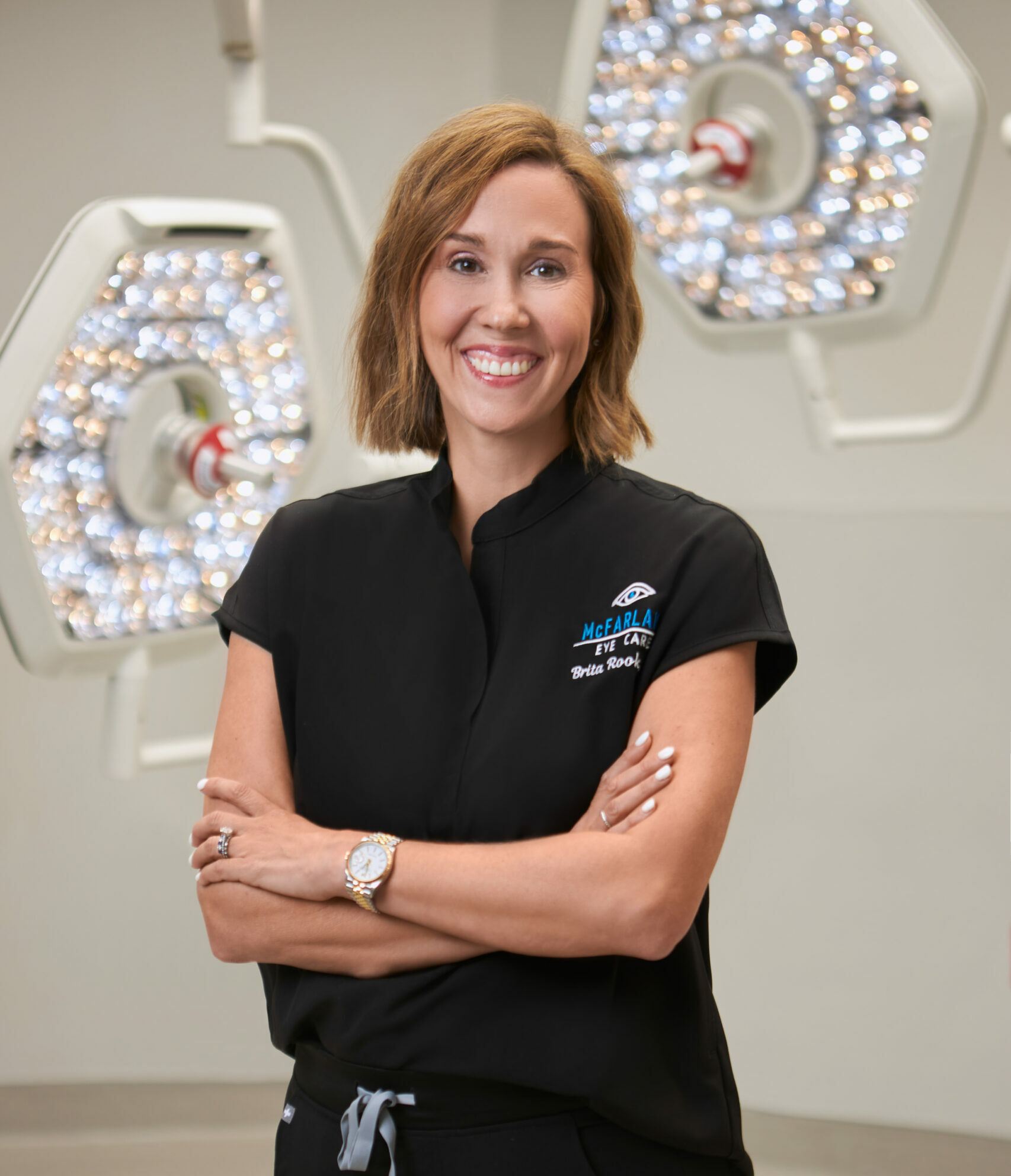
At McFarland Eye Care, we understand the invaluable role clear vision plays in a child’s development journey. Our pediatric ophthalmology services specialize in addressing a range of concerns that can affect children’s eyesight during their crucial developmental years.
Watch Ellie’s journey with Dr. Brita Rook at
McFarland Eye Care.
Parents play an essential role as perceptive observers when it comes to children’s eye health. While teachers might spot hints of vision problems due to learning difficulties at school, you might notice the following signs at home:
If you notice any of these signs in your child, it’s important to schedule an appointment for your child at McFarland Eye Care. Timely intervention can significantly contribute to maintaining clear vision and healthy eyes.
A pediatric eye exam is specially designed to suit children’s unique needs, which makes it different from the comprehensive eye exams adults have. This difference comes from the fact that children are in various stages of growth and might not be able to express themselves as easily.
Unlike adults, children might struggle to read letters on a screen for visual acuity tests. Since they often cannot verbalize their vision symptoms effectively, the eye exam process is adjusted accordingly.
During a pediatric eye exam at McFarland Eye Care, our specialists will utilize a range of techniques to ensure a thorough eye exam. They will:
The goal of this exam is to guarantee that your child’s vision is sharp, their eyes are in good health and developing normally

Strabismus, commonly known as “crossed eyes,” refers to a condition where the eyes are not properly aligned and do not point in the same direction. One eye might turn inwards, outwards, upwards, or downwards while the other focuses on an object.
This misalignment can be constant or only occur from time to time. It can also affect one or both eyes.
Strabismus treatment aims to align the eyes for improved vision. If your child is diagnosed with strabismus, the recommended treatment will depend on the severity and the underlying cause:
In some cases, this eye condition can occur in adults. At McFarland Eye Care, we also treat adult’s who have strabismus.
Amblyopia, or “lazy eye,” is a childhood vision disorder causing reduced vision in one eye due to the brain’s vision processing issue. It often results from misaligned eyes, differing prescriptions, or visual blockages during critical development. The brain might suppress one eye’s input to avoid confusion.
Early detection and intervention, usually before age seven to nine, are vital due to ongoing visual development. Treatments for amblyopia include corrective glasses, patching the stronger eye, or blurring of the stronger eye with special drops. Vision therapy and surgical procedures are also options.
Successful treatment hinges on factors like the underlying cause of amblyopia and age at the start of intervention. Regular childhood eye exams are crucial to promptly address vision problems and enhance amblyopia management.
Tears are made in the lacrimal gland on the upper outer corner outside the eye. Tears normally drain from the eye down to the nose through the tear duct or nasolacrimal duct. A tear duct obstruction keeps tears from draining through this system normally. If the tear duct is blocked, there will be backflow of tears and they will build up around the eye. Sometimes discharge may also come from the eye.
Fortunately, tear duct obstruction goes away on its own in most cases before the age of 8 to 10 months. If the tear duct remains blocked after 8 to 10 months of age, there is much less of a chance for the obstruction to resolve on its own and a procedure such as nasolacrimal duct probing may be recommended.
As your child grows, their eyes can change quickly. Your child’s pediatrician will likely screen your child’s vision as part of their regular checkups. If they find signs of a vision problem, they may recommend that your child see an eye doctor for a comprehensive eye exam.
Although both are important, a vision screening and an eye exam are not the same thing.
Since many vision problems begin at an early age, you should make sure your child gets the recommended eye exams to help keep their eyes healthy. Healthy vision is important for your child’s overall development and learning ability. Schedule an appointment at McFarland Eye Care in Little Rock, AR, today!

Let us introduce you to Dr. Brita Rook at McFarland Eye Care in Little Rock, AR, during a personal consultation. She is the expert pediatric ophthalmologist you need help you discover the best solution for the little ones in your family.